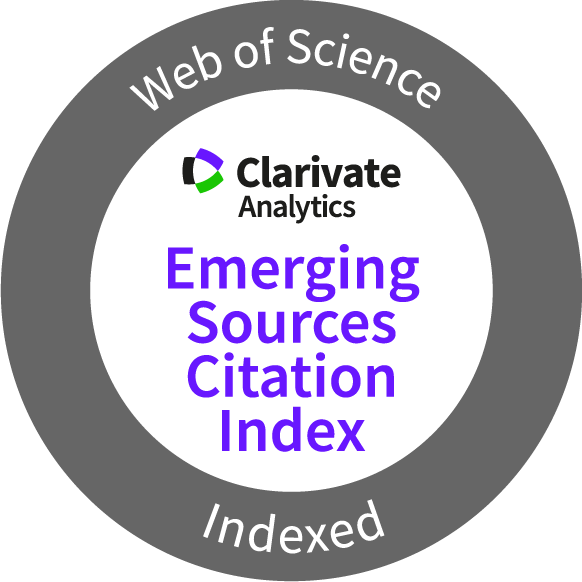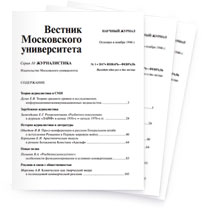Issue
№ 2
' 2025
Content:
-
Sociology of Journalism
«Assessment of the impact of media news backgrounds on inflation in Russia»
Given the growing number and variety of information flows, the influence of the media on public sentiment, the news background, as a key element of media information, directly affects economic decisions, and the analysis of its dynamics in real time can significantly increase the accuracy of economic forecasts and models. The article studied the impact of the news background contained in media publications on the prices and inflation level. The methodological tools proposed by the authors make it possible not only to analyze inflationary processes, but also to predict their dynamics taking into account the media context. Processing 147 thousand news articles by using a pre-trained neural network from Microsoft made it possible to select 3.5 thousand news about inflation and prices, dividing them into “proinflationary” and “disinflationary”. To form training and test samples, a connection to the GigaChat neural network is implemented. The inflation tonality of the marked news was simulated by pre-processing using the TF-IDF method and using logistic regression, Naive Bayesian classifier, Random Forest and CatBoost, as well as by additional training (fine-tuning) of neural networks based on the BERT architecture, pre-trained in Russian. The methodological basis was made up of methods for parsing html sites, natural language processing (NLP), deep neural network architecture, and regression algorithms. As a result, we have the inflation background index contained in the Russian media publications, with high accuracy describing the “shock” events in the economy. The findings can be used to fine-tune economic models and create forecasting tools, highlighting the importance of media content in assessing the economic situation.
Keywords: news background, inflation, consumer price index, text analysis, NLP, Transformers, BERT
DOI: 10.55959/msu. vestnik.journ.2.2025.332Yuri A. Metel, Natalia N. Kunitsyna 3 -
New Media
«Representation of the Moscow districts in local internet communities on the VK social network»
Social media serve not only as platforms for discussing pressing issues, exchanging opinions, and informing, but also as avenues for representing urban areas. The content (posts and comments) of urban Internet communities contains linguistic markers that reveal how communicators describe and interpret the local characteristics of their districts. This study delves into the peculiarities of how metropolitan districts are represented in the content of Moscow communities on the VK social network. The authors conducted a corpus analysis of a diverse range of records and comments on public pages and groups representing six Moscow districts that vary in socio-economic characteristics. The findings reveal that the dominant semantic components of Moscow district representation primarily focus on territorial features and behavioral aspects of life within the district. Interestingly, the communities of Moscow’s post-industrial cluster emphasize cultural identity as a significant aspect of representation. Moreover, the nature of neighborhood representation varies depending on the type of Internet community (managed publics or groups primarily controlled by subscribers). This distinction influences not only the thematic focus but also the content and meaning of the content shared on these social media platforms.
Keywords: media representation of the city, urban areas, social networks
DOI: 10.55959/msu.vestnik.journ.2.2025.3356Irina A. Tikhonova, Evgeny A. Kozhemyakin 33 -
History of Journalism
«“New Tactics” in the Newspaper of First-Wave Russian Emigrants “The Voice of Russia”»
This article delves into the Russian émigré newspaper “Golos Rossii,” published in Berlin in 1921 under the leadership of editor Pavel N. Milyukov and his associates. The publication aimed to champion Milyukov’s “new tactics,” a concept that emerged during the intensification of trade and diplomatic relations between Soviet Russia and Western countries, particularly Germany and Great Britain. These tactics advocated for emigrants to place trust in the Russian people, rejecting the notion of foreign intervention and abandoning hopes for a swift and extensive return to Russia. Prior to the revolution, the editorial team of “The Voice of Russia” collaborated with the cadet newspaper “Rech.” Later, they joined forces with the renowned émigré newspaper “Poslednie Novosti” (Paris). However, the “new tactics” were not universally accepted by Russian émigré publications of diverse political leanings, leading to a heated controversy. During its six-month tenure under Milyukov’s direction, “The Voice of Russia” garnered little scholarly attention despite its significance. This article seeks to rectify this oversight by analyzing the newspaper’s editorial strategy and its role in shaping the discourse and opinions within emigrant communities. In February 1922, Milyukov’s team abruptly left “The Voice of Russia,” citing the challenging economic circumstances. The promotion of the “new tactics” continued through “Poslednie Novosti” (1920– 1940) in Paris.
Keywords: Russian emigration, newspaper “The Voice of Russia”, P. N. Milyukov, concept of “new tactics”.
DOI: 10.55959/msu.vestnik.journ.2.2025.5779Artem V. Lysenko 57 -
«The New York Times on the “Russian Ballet” (1920– 1930s)»
This article delves into The New York Times’ coverage of the Ballets Russes and its composers from 1920 to 1930. Driven by the enduring cultural significance of Sergei Diaghilev and the Ballets Russes, as well as the limited scholarly attention given to this topic, the study aims to identify relevant publications within the newspaper and categorize their genres. Using a comprehensive sampling of The New York Times’ archive for the specified decade, the study analyzes 84 publications. These include reviews, announcements, news articles, opinion pieces, and obituaries. Reviews and announcements emerge as the most prevalent genres. The findings reveal sustained media attention to the Ballets Russes throughout the period, suggesting its consistent cultural relevance. Despite facing various challenges, the newspaper’s overall tone remained predominantly positive. The article not only provides valuable historical and cultural insights but also serves as a foundation for further academic inquiry into the global reception of the Ballets Russes and its broader cultural implications.
Keywords: : Ballets Russes, S. Diaghilev, I. Stravinsky, S. Prokofiev, New York Times
DOI: 10.55959/msu.vestnik.journ.2.2025.8095Mariia D. Sherikh 80 -
Discussion
«Axiology and pragmatics of the review texts by T. Moskvina: the author’s genre specifics»
Traditional literary, artistic, and professional art criticism journals have lost their decisive role in the cultural processes of the 21st century. Instead, media have become increasingly popular platforms for critical articles. This transformation has led to a significant deviation from historically fixed review text prototypes. Media criticism has even begun to attribute even the texts of announcements and annotations to reviews. The classical review genre is explored in the works of T. V. Moskvina. Moskvina investigates the axiological and pragmatic aspects of media speech genres, such as review, and identifies the role of tropes and toposes in reviews. She also defines linguistic techniques that mak e her texts suitable for high educational purposes and functioning as social institutions. Moskvina employs a range of methods to analyze media reviews. She uses content analysis to study the content and semantic parameters of texts. Cognitive-pragmatic, contextual, and semantic-stylistic methods are used to interpret the functions of tropes. Sociolinguistic analysis, based on the correlation of social and lingui stic phenomena, provides a broader social and cultural-historical context for analyzing reviews by Moskvina. Individual style, understood as a set of cognitive, linguistic, and stylisti c characteristics, is formed by different language resources. Moskvina created socially significant generalizations and relevant ideas about social and cultural processes in our country.
Keywords: speech genre, media review, axiology, figurativeness, expressiveness, tropes, Tatiana Moskvina
DOI: 10.55959/msu. vestnik.journ.2.2025.96114Ella G. Kulikova 96 -
Essay
«Modern storytelling: concept, definition, types»
This article delves into the art of storytelling, exploring its significance in today’s competitive communication landscape. Despite numerous publications, storytelling remains a poorly studied scientific phenomenon. The author traces its origins to intuitive use and highlights its conscious adoption in the late 20th century. Scientific research on storytelling commenced at this time but has been hindered by conflicting practices, insufficient analysis, and a lack of systematic approaches. Drawing from primary research, practitioner insights, and scientific works, the author presents a comprehensive analysis of storytelling and history. This includes defining these concepts, categorizing storytelling types, and distinguishing them from narrative and narration, two terms often conflated by researchers and practitioners. The author’s findings pave the way for systematic exploration of storytelling’s various aspects, predicting its future development, and enhancing its practical application. Notably, the author foresees the rapid growth of visual, multimedia, and AI storytelling in the near future.
Keywords: storytelling, types of storytelling, storytelling theory, communication strategies
DOI: 10.55959/msu.vestnik.journ.2.2025.115135Alexander N. Nazaykin 115







